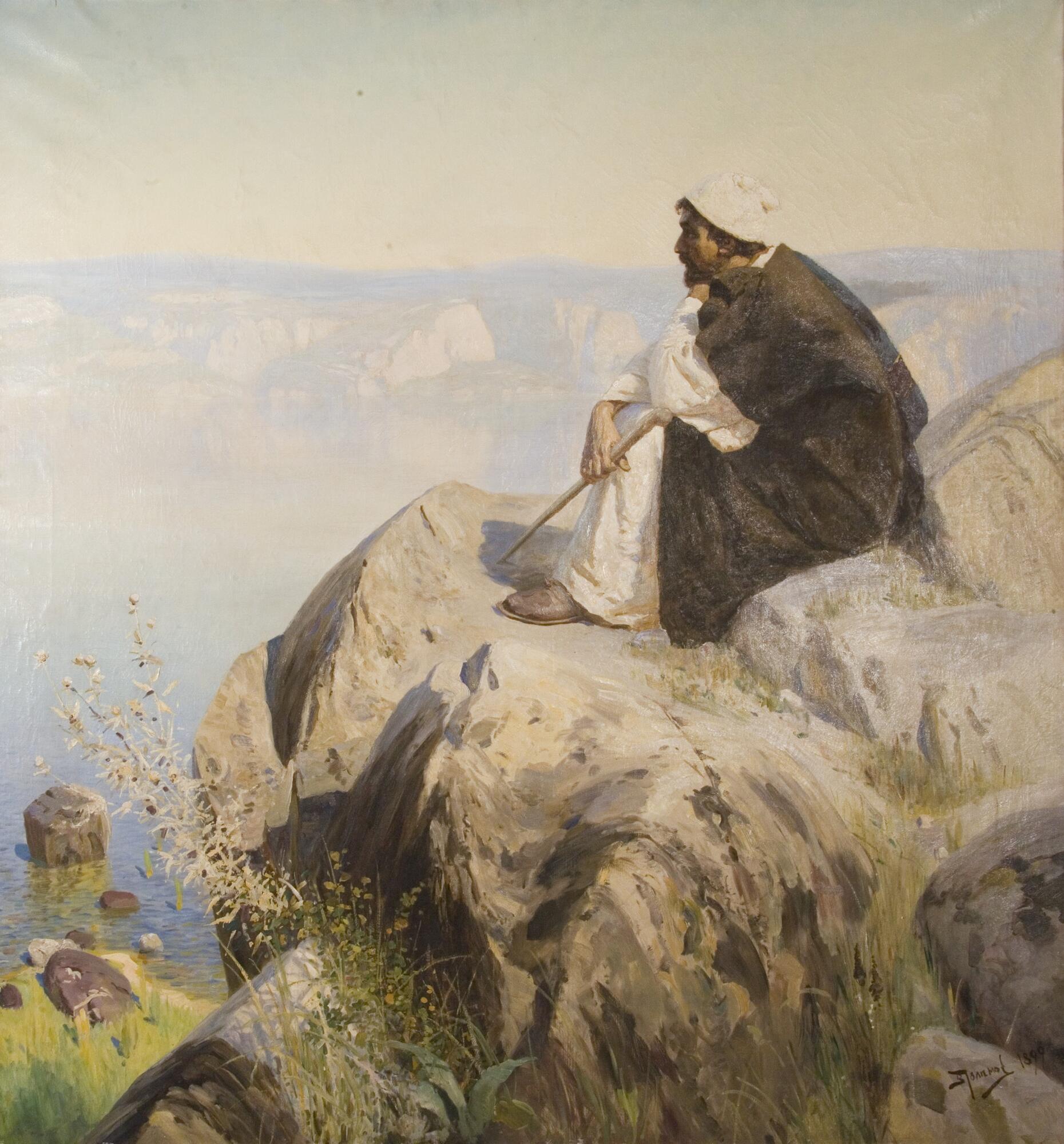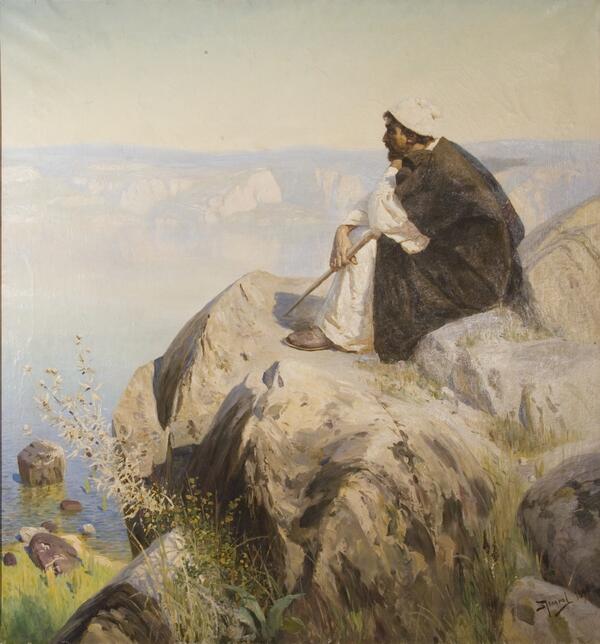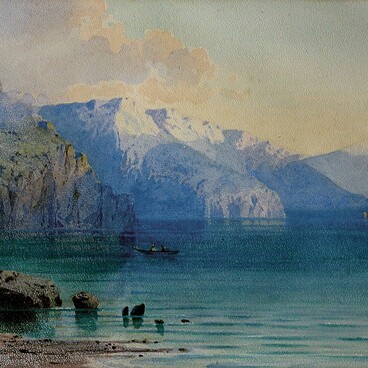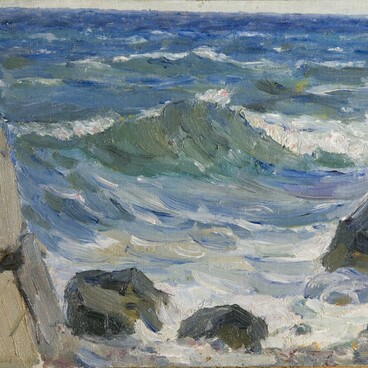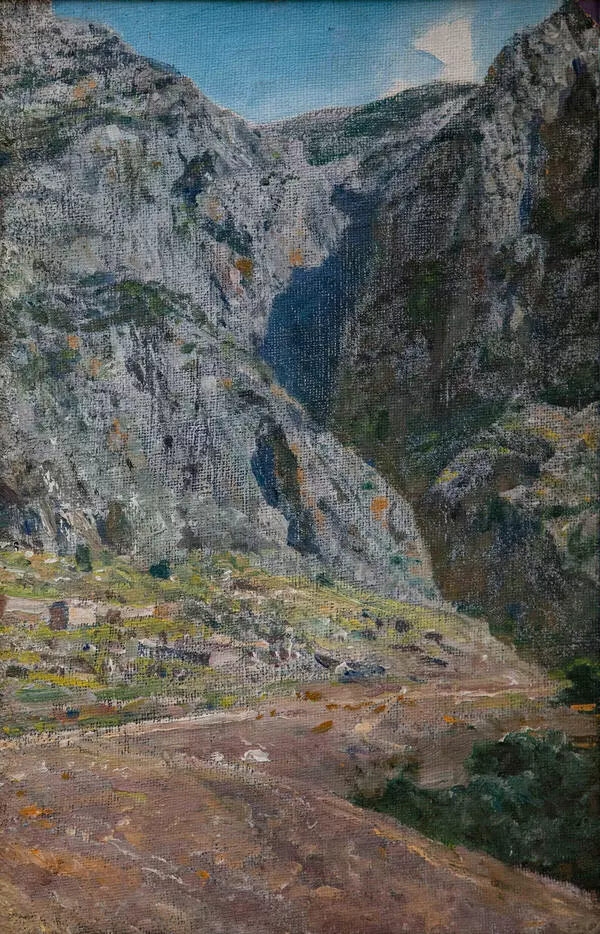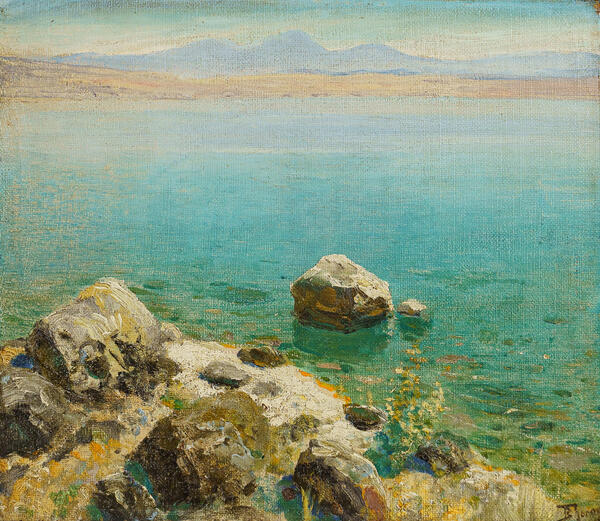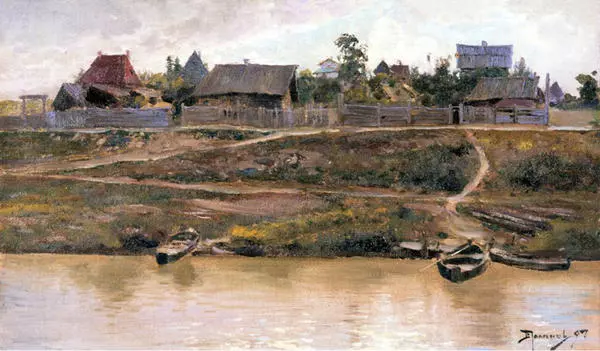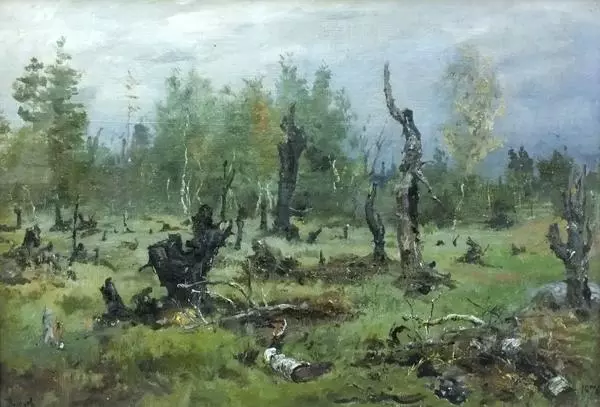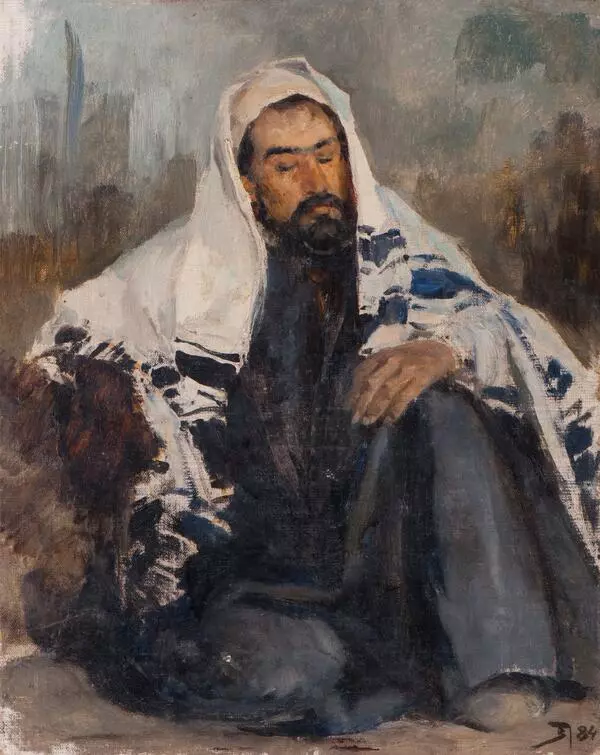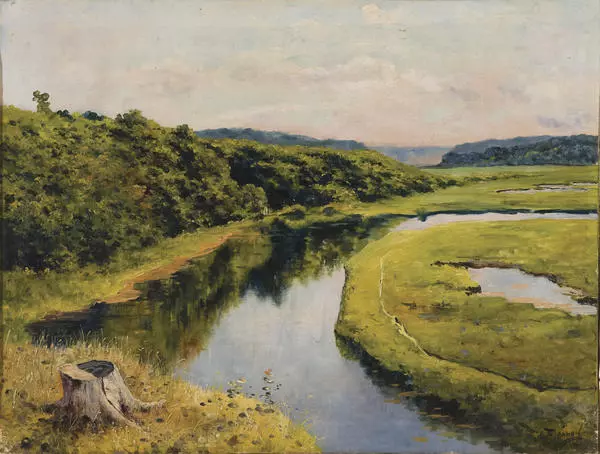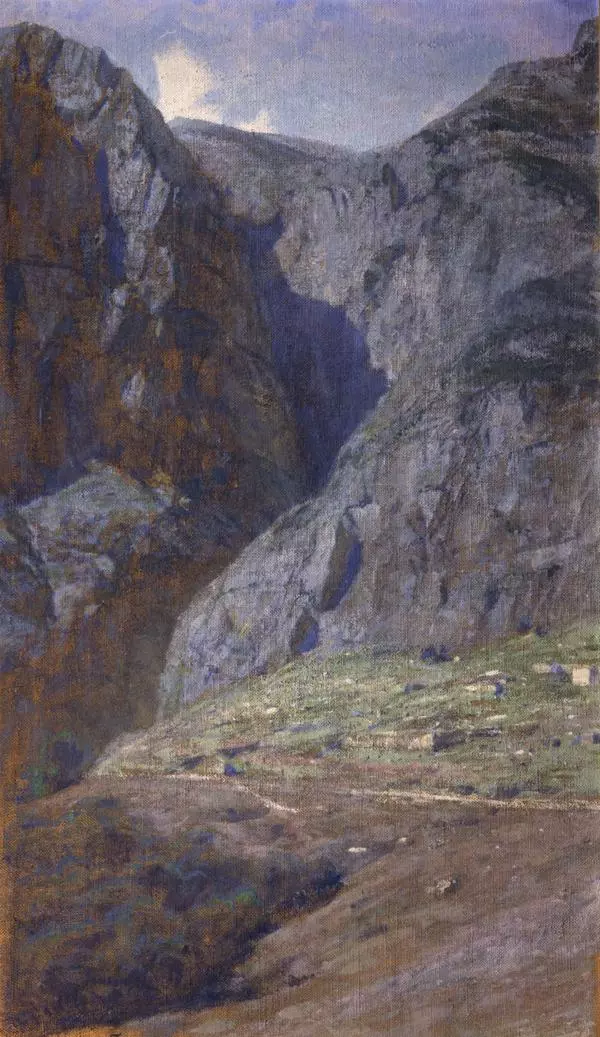The painting “Dreams” by Vasily Dmitrievich Polenov (1844-1927), a famous Russian artist, entered the museum in 1918 from the Karacharovsky estate of the Uvarovs. It was purchased by Countess Praskovya Sergeevna from the author himself, with whom she was familiar. In the estate near Murom, the painting was placed in one of the rooms of the palace. And in the museum the room where it was exhibited had the name “Polenovskaya”. Polenov’s “Dreams” are included in his series of works (1884-1909) about the earthly life of Jesus. The author himself called this cycle “The Gospel Circle” or “The Way of Christ in the Landscape”. By the eighties of the XIX century, a new tradition in the depiction of Christian subjects had developed in Russian art. The artists presented them as real historical events. They tried to accurately reflect nature, to convey costumes and furnishings with ethnographic care. And the main thing is to focus attention not on miracles, but on the morality of Christianity. For Polenov, as for many of his educated contemporaries, Christ was the ideal of man: “I love the gospel narrative unspeakably, I love this naive, truthful story, I love this pure and high ethics, I love this extraordinary humanity… this tragic, terrible, but at the same time grandiose end…”.
Polenov turned to this story with Jesus sitting on a mount more than once. The first version was painted in 1890. Our picture appeared nine years later — in the year of his second trip to the evangelical places. In addition to Murom, versions of “Dreams” are kept in the Radishchev Museum in Saratov, the Museum of Personal Collections in Moscow, and the Russian Museum in St. Petersburg. A large sketch is in the National Art Museum in Minsk. The painter depicted Christ sitting on a mount near Lake Genisaret in Palestine. The most important events of Christ’s life took place in this place, here the people listened to his Sermon on the Mount. On this canvas, Jesus is thinking and is contemplating nature. The landscape, with its silence, corresponds to his state of mind.
The smooth outlines of his figure harmoniously fit into the line of coastal stones in the foreground and distant hills melting in the haze of early morning. The work is distinguished by freshness, translucent tones, purity and simplicity of composition. The image of Jesus is so real, human, that you can take him for a tired traveler. Vasily Polenov seemed to reflect on this canvas the words of Ernest Renan, whose scientific work about the human Christ he was very passionate about: “These mountains, the sea, the azure sky, these high plains on the horizon were not a melancholic vision of the soul for him… but… a symbol, a translucent shadow of the invisible world and the new sky.” Leo Tolstoy himself recognized Polenov’s paintings on the life of Christ as a “good illustration” for his gospel. There are no miracles in it at all, because the writer, like the artist, was concerned about moral issues in the story of Jesus.
Polenov turned to this story with Jesus sitting on a mount more than once. The first version was painted in 1890. Our picture appeared nine years later — in the year of his second trip to the evangelical places. In addition to Murom, versions of “Dreams” are kept in the Radishchev Museum in Saratov, the Museum of Personal Collections in Moscow, and the Russian Museum in St. Petersburg. A large sketch is in the National Art Museum in Minsk. The painter depicted Christ sitting on a mount near Lake Genisaret in Palestine. The most important events of Christ’s life took place in this place, here the people listened to his Sermon on the Mount. On this canvas, Jesus is thinking and is contemplating nature. The landscape, with its silence, corresponds to his state of mind.
The smooth outlines of his figure harmoniously fit into the line of coastal stones in the foreground and distant hills melting in the haze of early morning. The work is distinguished by freshness, translucent tones, purity and simplicity of composition. The image of Jesus is so real, human, that you can take him for a tired traveler. Vasily Polenov seemed to reflect on this canvas the words of Ernest Renan, whose scientific work about the human Christ he was very passionate about: “These mountains, the sea, the azure sky, these high plains on the horizon were not a melancholic vision of the soul for him… but… a symbol, a translucent shadow of the invisible world and the new sky.” Leo Tolstoy himself recognized Polenov’s paintings on the life of Christ as a “good illustration” for his gospel. There are no miracles in it at all, because the writer, like the artist, was concerned about moral issues in the story of Jesus.
